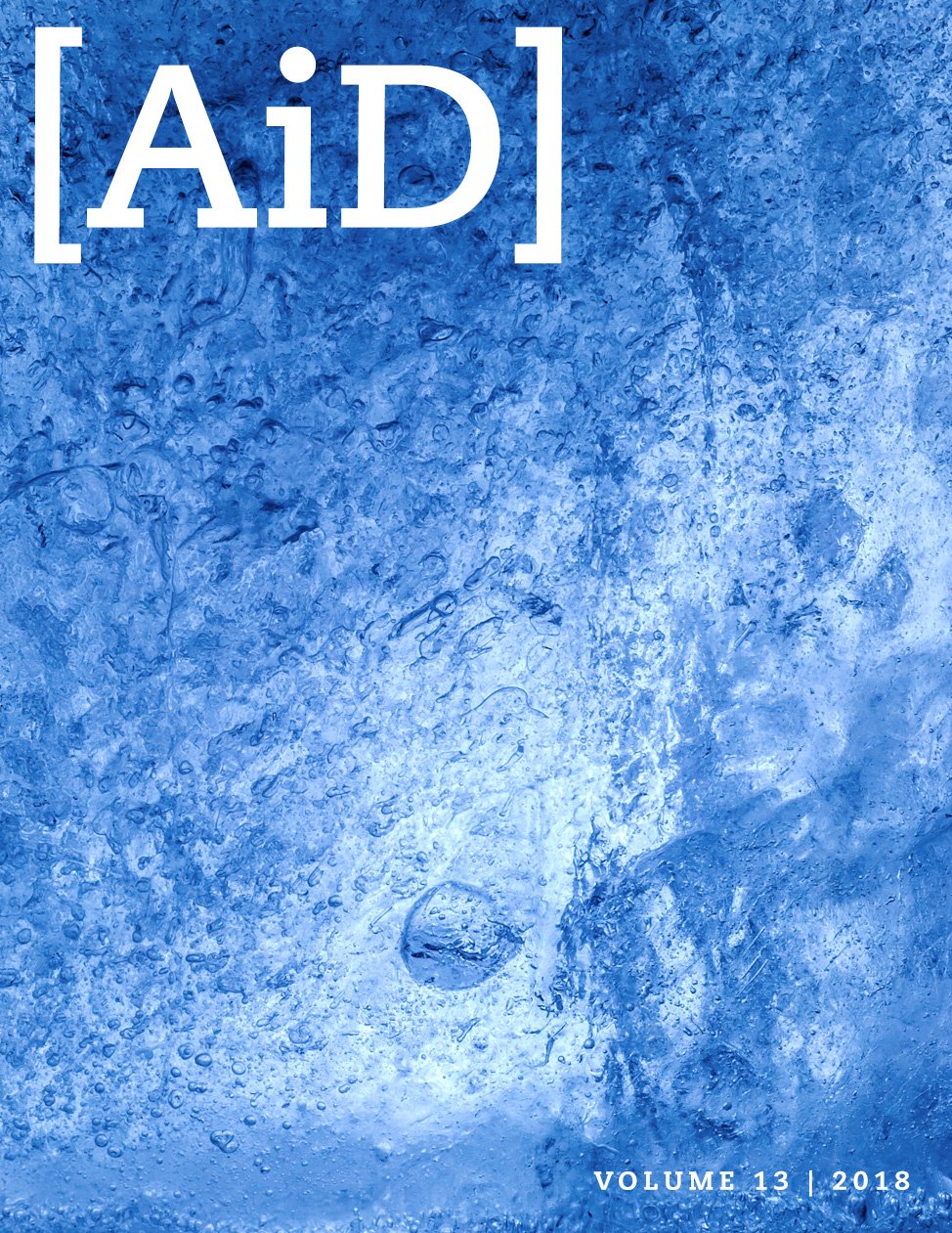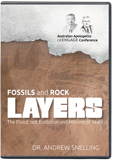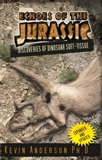
Disharmonious Fossils
Though evolutionists point to the fossil record, fossils are often found where they are not expected which frequently cause revisions to their timelines.
Evolutionists love to tout the fossil record as evidence for their theory. No less an authority for evolution than Richard Dawkins has said, “All the fossils that we have ever found have always been found in the appropriate place in the time sequence. There are no fossils in the wrong place.”1 Dawkins’s statement is emphatic and confident. It makes for a good quotation. However, Dawkins is wrong. Fossils are often found where they are not expected, and these finds cause evolutionists to revise their timelines.
Evolutionists have a lot of problems with the fossil record. One of these problems comes from plants. The evolutionary paradigm suggests that angiosperms (flowering plants) evolved around 120 million years ago. While flowers are too delicate to fossilize easily, the pollen they produce is not.
Pollen fossils are found periodically, including a recent find in Switzerland. Researchers from the University of Zurich studied six types of pollen fossils carefully and claimed they were 240 million years old. The study, published in 2013, proclaimed, “The described pollen grains show all the essential features of angiosperm pollen.”2 However, because this would make fossilized angiosperm pollen twice as old as known angiosperm plant fossils, the very next sentence claimed that they had to be only similar to angiosperm pollen, not the same. Yet the study’s authors had just admitted that the fossils had all the features of angiosperm pollen. Their dogma appears to be interfering with their science.
Pollen fossils are not the only problem in the fossil record that evolutionists must resolve.
Pollen fossils are not the only problem in the fossil record that evolutionists must resolve. In 2012, researchers announced the discovery of two Sinocalliopteryx skeletons with meals preserved in their stomachs.3 Sinocalliopteryx was a mid-sized theropod dinosaur. It supposedly lived around 124 million years ago. Yet these skeletons were found with the undigested remains of modern-looking birds called Confuciusornis in their stomachs. This pigeon-sized bird was very similar to modern birds, with smaller forearms and claws on the wings being the major differences. Yet this largely modern-looking bird was found inside a dinosaur fossil over 100 million years old. An essentially modern bird should not have been found there, according to the evolutionary timeline.
Non-Fitting Fossils in China & Antarctica
A second such example was published in 2005. A large opossum-sized creature called Repenomamus (a mammal) was discovered in China with a juvenile Psittacosaurus (a dinosaur) undigested in its stomach. This example was upsetting for evolutionists since they had previously presumed that the “early” mammals had been small and herbivorous. The study indirectly admitted this in the abstract: “Our discoveries constitute the first direct evidence that some triconodont mammals were carnivorous and fed on small vertebrates, including young dinosaurs, and also show that Mesozoic mammals had a much greater range of body sizes than previously known.”4 In other words, mammals weren’t just small and herbivorous as evolutionists had predicted they were. These fossils are proof of that.
Evolutionists struggle with other fossils as well. A study from North Carolina State University in January of 2005 announced that a fossil specimen from Antarctica had been identified as a duck, flipping the evolutionary script. Ducks, some argued, were not supposed to have diverged from their ancestral forms until after the Cretaceous period. Yet this fossil was dated to the late Cretaceous period approximately 70 million years ago, according to evolutionists. The fossil caused the study’s authors to speculate that “at least duck, chicken and ratite bird relatives were coextant with non-avian dinosaurs.”5 These evolutionists were being quite honest. Modern birds thus existed with the dinosaurs they are supposed to have evolved from. This is a big problem and not harmonious with the evolutionary worldview. Predictably, it provoked an angry response.
No evolutionist disputed the dating of the fossil. However, this did not prevent them from challenging the veracity of the identification of the fossil as a duck. A respected paleornithologist, Professor Alan Feduccia of the University of North Carolina at Chapel Hill, publicly proclaimed he did not believe it was a duck. “This is basically an unidentifiable bundle of bones. . . . This is a well-known specimen that has been kicking around since 1992, and it was originally described as belonging to an extinct group. And now all of a sudden it's a modern duck,”6 Dr. Feduccia told BBC News when the study was released to the public. Undaunted, the study’s lead author, Dr. Julia Clark, then of North Carolina State University and a Yale graduate, doubled down on the findings, telling BBC, “Now we have a fossil which indicates that at least part of the diversification of living birds had begun before the extinction of non-avian dinosaurs.”7 Her point was that living bird kinds had existed alongside dinosaurs, just as creationists would predict.
Disharmonious Fossils in Europe
A recent study published in Nature Communications confirms this problem for evolutionists. The study examined the fossil of a recently hatched bird found in Europe. Classed as an unknown species of Enantiornithes, the fossil was dated to be around 127 million years old.8 Closer examination of the study revealed some very interesting details. The structure of the bones was such that it is highly unlikely it could have flown upon hatching. The wings were incomplete, so it is impossible to tell if this bird had claws on its wings. Even if it did, some modern birds also have claws on their wings, though most of them are flightless. Further, even using sophisticated scanning methods, no teeth were revealed. Since living birds lack teeth, this would seem to indicate that this chick was like the kinds of birds we see today. Lest evolutionists challenge this conclusion by pointing out that tooth development could have occurred after hatching, another independent study found that chickens contain the genetic information for teeth. However, while turning on that genetic information for teeth development is a fatal mutation, teeth develop in the embryo, prior to the chick hatching out of its shell.9 If the fossil Enantiornithes chick was going to develop teeth, it would have done so prior to hatching.
The implications of the Enantiornithes chick fossil are significant. It has all the features of a modern bird. It was a largely helpless chick, just like a modern bird. It was flightless at hatching and lacked teeth. Yet evolutionists assigned it a date in the 120 million years range. This raises the significant question of how a modern-looking bird could have coexisted with dinosaurs in the evolutionary paradigm. It is not harmonious with the expected evolutionary fossil record.
Fossil formations across the globe lend credence to the lack of harmony in the fossil record.
North American Disharmonious Fossils
Fossil formations across the globe lend credence to the lack of harmony in the fossil record. The Thomas Fork Formation in Wyoming contains fossil snails, fish scales, turtle carapaces, reptile bones, and dinosaur eggshells, which should not all be found together.10 The Guimarota coal mine in Portugal revealed Archaeopteryx like teeth, Multituberculata, which are mammals similar to marsupials, and dinosaur teeth before the mine flooded.11 Fossil bird teeth, fossil dinosaur teeth, and mammals all in the same place is indicative that they lived together by evolutionists’ own logic.
There are other such fossil-rich formations as well. The Owl Creek Formation in Mississippi contains Triceratops kind teeth and marine ammonite fossils.12 Egg Mountain in Montana contains fossilized Maiasaurus bones along with their eggs in what are claimed to be nests.13 However, it also contains Multituberculata (mammal) fossils. The Cedar Mountain Formation in Utah contains fossils of dinosaurs, sharks, and lungfish.14 Of course, sharks live in the water, but dinosaurs live on land. The two should not be fossilized together if the fossils in this rock unit represented a buried biological community in its environment as is commonly supposed.
The evolutionary story is like elastic: it is constantly stretched to fit new finds.
Conclusion: Some Fossils Just Don't Fit Evolutionist Dogma
The above examples are by no means an exhaustive list of the disharmony that exists in the fossil record. Examining every bonebed and graveyard and producing the examples of disharmony that exist within the geologic record would take more space than is available for this article. Yet in each case examined here, with the exception of the most recent Enantiornithes discovery, evolutionists have either ignored the issue or simply adapted their timelines. The evolutionary story is like elastic: it is constantly stretched to fit new finds.
The major problem with evolutionists’ handling of the fossil record comes from their worldview. Instead of questioning their belief when a fossil is found in an unexpected place, they impose their worldview on the record and then make adjustments to their “just-so stories.” Thus, no piece of fossil evidence, no matter how damaging to the evolutionary tale, cannot be explained. This, however, is not science, but storytelling by scientists who weren’t there in the past to observe what happened and how it happened. All they have is the observable evidence in the present from which to infer what might have happened in the past based on their insistence on purely natural processes. True science makes testable predictions, part of the scientific method referred to as falsifiability. In order for something to be scientific, there has to be a way for it to be disproved. If the evolutionary interpretation of the fossil record can accommodate any discovery, then their evolutionary fable is never falsifiable.
Ultimately, the battle is not simply over the fossils. Evidence, while valuable, is not the ultimate arbitrator.
Ultimately, the battle is not simply over the fossils. Evidence, while valuable, is not the ultimate arbitrator. Evolutionists will only change their minds when they change their worldview. Evolutionists use their worldview to interpret the fossil record to support their worldview in a dizzying round of circular reasoning. Because the past is not observable, it must be interpreted based on the scientist’s worldview assumptions. So, evolutionists (either consciously or subconsciously) impose their worldview on the evidence. Thus it should surprise no one that the resulting interpretation always supports their worldview. Disharmony in the record can be shoehorned into their theory because they are not guided simply by evidence. Instead, they are guided by their worldview in interpreting the evidence. Thus their resulting stories can never be dogmatically asserted as fact.
Footnotes
- Ed Stoddard, “Richard Dawkins Makes Case for Evolution in New Book,” Reuters (October 5, 2009), accessed August 2, 2018, https://www.reuters.com/article/us-books-author-dawkins-idUSTRE59432120091005.
- Peter A. Hochuli and Susanne Feist-Burkhardt, “Angiosperm-like Pollen and Afropolis from the Middle Triassic (Anisian) of the Germanic Basin (Northern Switzerland),” Frontiers in Plant Science 4 (October 1, 2013), accessed August 3, 2018, https://www.frontiersin.org/articles/10.3389/fpls.2013.00344/full.
- Lida Xing et al., “Abdominal Contents from Two Large Early Cretaceous Compsognathids (Dinosauria: Theropoda) Demonstrate Feeding on Confuciusornithids and Dromaeosaurids,” PLOS ONE 7,no. 8 (August 29, 2012): e44012, accessed August 3, 2018, http://journals.plos.org/plosone/article?id=10.1371/journal.pone.0044012.
- Yaoming Hu et al., “Large Mesozoic Mammals Fed on Young Dinosaurs,” Nature 433, (January 13, 2005): 149–152, accessed August 3, 2018, https://www.nature.com/articles/nature03102.
- Julia A. Clarke et al., “Definitive Fossil Evidence for Extant Avian Radiation in the Cretaceous,” Nature 433 (January 20, 2005): 305–308, accessed August 3, 2018, http://www.digimorph.org/specimens/Vegavis_iaai/nature03150.pdf.
- “Cretaceous Duck Ruffles Feathers,” BBC News (January 20, 2005), accessed August 3, 2018, http://news.bbc.co.uk/2/hi/science/nature/4187287.stm.
- “Cretaceous Duck Ruffles Feathers.”
- Fabian Knoll et al., “A Diminutive Perinate European Enantiornithes Reveals an Asynchronous Ossification Pattern in Early Birds,” Nature Communications 9, (March 5, 2018): 937, accessed August 2, 2018, https://www.nature.com/articles/s41467-018-03295-9.
- Matthew P.Harris et al., “The Development of Archosaurian First-Generation Teeth in a Chicken Mutant,” Current Biology 16, no. 4 (February 21, 2006): P371–377, accessed August 3, 2018, https://www.cell.com/current-biology/fulltext/S0960-9822(06)00064-9.
- John A. Dorr et al., “Newfound Early Cretaceous Dinosaurs and Other Fossils in Southeastern Idaho and Westernmost Wyoming,” Contributions from the Museum of Paleontology, The University of Michigan, 27. no. 3: 73–85 (August 16, 1985), accessed August 1, 2018, https://deepblue.lib.umich.edu/bitstream/handle/2027.42/48524/ID377.pdf?sequence=2.
- Jens Zinke, “Small Theropod Teeth from the Upper Jurassic Coal Mine of Guimarota (Portugal),” Paläontologische Zeitschrift 72 (April, 1998): 72, 179–189, accessed August 1, 2018, https://link.springer.com/article/10.1007/BF02987825.
- Andrew A. Farke and George E. Phillips, “The First Reported Ceratopsid Dinosaur from Eastern North America (Owl Creek Formation, Upper Cretaceous, Mississippi, USA),” PeerJ 5 (May 23, 2017): e3342, accessed August 1, 2018, https://www.ncbi.nlm.nih.gov/pmc/articles/PMC5444368/.
- Willie Freimuth, “Paleontology-Egg Mountain,” The Montana Geoheritage Project (2016), accessed August 3, 2018, https://serc.carleton.edu/research_education/mt_geoheritage/sites/augusta_choteau/paleontology.html.
- James I. Kirkland and Scott K. Madsen, “The Lower Cretaceous Cedar Mountain Formation, Eastern Utah: The View Up an Always Interesting Learning Curve,” Utah Geological Association Publication 35 (May 4–6, 2007), accessed August 2, 2018), https://www.researchgate.net/profile/James_Kirkland2/publication/40662964_The_Lower_Cretaceous_Cedar_Mountain_Formation_eastern_Utah_the_view_up_an_always_interesting_learning_curve_papers_from_a_symposium_of_the_Geological_Society_of_America_at_the_annual_meeting_in_St_Geo/links/5690159e08aec14fa557cde0/The-Lower-Cretaceous-Cedar-Mountain-Formation-eastern-Utah-the-view-up-an-always-interesting-learning-curve-papers-from-a-symposium-of-the-Geological-Society-of-America-at-the-annual-meeting-in-St.pdf.
Recommended Resources

Answers in Genesis is an apologetics ministry, dedicated to helping Christians defend their faith and proclaim the good news of Jesus Christ.
- Customer Service 800.778.3390
- © 2024 Answers in Genesis




